版权所有:内蒙古大学图书馆 技术提供:维普资讯• 智图
内蒙古自治区呼和浩特市赛罕区大学西街235号 邮编: 010021
T=题名(书名、题名),A=作者(责任者),K=主题词,P=出版物名称,PU=出版社名称,O=机构(作者单位、学位授予单位、专利申请人),L=中图分类号,C=学科分类号,U=全部字段,Y=年(出版发行年、学位年度、标准发布年)
AND代表“并且”;OR代表“或者”;NOT代表“不包含”;(注意必须大写,运算符两边需空一格)
范例一:(K=图书馆学 OR K=情报学) AND A=范并思 AND Y=1982-2016
范例二:P=计算机应用与软件 AND (U=C++ OR U=Basic) NOT K=Visual AND Y=2011-2016
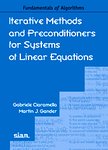
Iterative methods use successive approximations to obtain more accurate solutions. This book gives an introduction to iterative methods and preconditioning for solving discretized elliptic partial differential equations and optimal control problems governed by the Laplace equation, for which the use of matrix-free procedures is crucial. All methods are explained and analyzed starting from the historical ideas of the inventors, which are often quoted from their seminal works.
Iterative Methods and Preconditioners for Systems of Linear Equations grew out of a set of lecture notes that were improved and enriched over time, resulting in a clear focus for the teaching methodology, which:
presents historical background,
derives complete convergence estimates for all methods,
illustrates and provides MATLAB codes for all methods, and
studies and tests all preconditioners first as stationary iterative solvers.
This user-oriented guide describes state-of-the-art methods for nonlinear equations and shows, via algorithms in pseudocode and Julia with several examples, how to choose an appropriate iterative method for a given problem and write an efficient solver or apply one written by others.
A sequel to the author's Solving Nonlinear Equations with Newton's Methods (SIAM, 2003), this book
contains new material on pseudo-transient continuation, mixed-precision solvers, and Anderson acceleration;
is supported by a Julia package and a suite of Jupyter notebooks; and
includes examples of nonlinear problems from many disciplines.
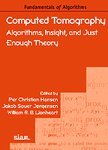
This book describes fundamental computational methods for image reconstruction in computed tomography (CT) with a focus on a pedagogical presentation of these methods and their underlying concepts. Insights into the advantages, limitations, and theoretical and computational aspects of the methods are included, giving a balanced presentation that allows readers to understand and implement CT reconstruction algorithms.
Unique in its emphasis on the interplay between modeling, computing, and algorithm development, Computed Tomography: algorithms, Insight, and Just Enough Theory
develops the mathematical and computational aspects of three main classes of reconstruction methods: classical filtered back-projection, algebraic iterative methods, and variational methods based on nonlinear numerical optimization algorithms;
spotlights the link between CT and numerical methods, which is rarely discussed in current literature; and
describes the effects of incomplete data using both microlocal analysis and singular value decomposition (SVD).
This book sets the stage for further exploration of CT algorithms. Readers will be able to grasp the underlying mathematical models to motivate and derive the basic principles of CT reconstruction and will gain basic understanding of fundamental computational challenges of CT, such as the influence of noisy and incomplete data, as well as the reconstruction capabilities and the convergence of the iterative algorithms. Exercises using MATLAB are included, allowing readers to experiment with the algorithms and making the book suitable for teaching and self-study.
Before doing the computational exercises, it is necessary to download the following software:
The AIR Tools II software package from computed tomography CT reconstruction regularization algebraic iterative reconstruction numerical optimization limited data singular value decomposition inverse problems
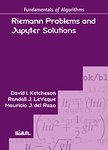
This book addresses an important class of mathematical problems—the Riemann problem—for first-order hyperbolic partial differential equations (PDEs), which arise when modeling wave propagation in applications such as fluid dynamics, traffic flow, acoustics, and elasticity. The solution of the Riemann problem captures essential information about these models and is the key ingredient in modern numerical methods for their solution.
This book covers the fundamental ideas related to classical Riemann solutions, including their special structure and the types of waves that arise, as well as the ideas behind fast approximate solvers for the Riemann problem. The emphasis is on the general ideas, but each chapter delves into a particular application.
Riemann Problems and Jupyter Solutions
is available in electronic form as a collection of Jupyter notebooks that contain executable computer code and interactive figures and animations, allowing readers to grasp how the concepts presented are affected by important parameters and to experiment by varying those parameters themselves;
is the only interactive book focused entirely on the Riemann problem; and
develops each concept in the context of a specific physical application, helping readers apply physical intuition in learning mathematical concepts.
Graduate students and researchers working in the analysis and/or numerical solution of hyperbolic PDEs will find this book of interest. This includes mathematicians, as well as scientists and engineers, working with applications like fluid dynamics, water waves, traffic modeling, or electromagnetism. Educators interested in developing instructional materials using Jupyter notebooks will also find this book useful. The book is appropriate for courses in Numerical Methods for Hyperbolic PDEs and Analysis of Hyperbolic PDEs, and it can be a great supplement for courses in computat
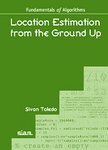
The location of an object can often be determined from indirect measurements using a process called estimation. This book explains the mathematical formulation of location-estimation problems and the statistical properties of these mathematical models. It also presents algorithms that are used to resolve these models to obtain location estimates, including the simplest linear models, nonlinear models (location estimation using satellite navigation systems and estimation of the signal arrival time from those satellites), dynamical systems (estimation of an entire path taken by a vehicle), and models with integer ambiguities (GPS location estimation that is centimeter-level accurate).
Location Estimation from the Ground Up
clearly presents analytic and algorithmic topics not covered in other books, including simple algorithms for Kalman filtering and smoothing, the solution of separable nonlinear optimization problems, estimation with integer ambiguities, and the implicit-function approach to estimating covariance matrices when the estimator is a minimizer or maximizer;
takes a unified approach to estimation while highlighting the differences between classes of estimation problems; and
is the only book on estimation written for math and computer science students and graduates.
Problems at the end of each chapter, many with solutions, help readers deepen their understanding of the material and guide them through small programming projects that apply theory and algorithms to the solution of real-world location-estimation problems.
The book's core audience consists of engineers, including software engineers and algorithm developers, and graduate students who work on location-estimation projects and who need help translating the theory into algorithms, code, and deep understanding of the problem in front of them. Instructors in mathematics, computer science, and engineering
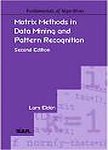
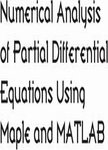
This book provides an elementary yet comprehensive introduction to the numerical solution of partial differential equations (PDEs). Used to model important phenomena, such as the heating of apartments and the behavior of electromagnetic waves, these equations have applications in engineering and the life sciences, and most can only be solved approximately using computers.
Numerical Analysis of Partial Differential Equations Using Maple and MATLAB provides detailed descriptions of the four major classes of discretization methods for PDEs (finite difference method, finite volume method, spectral method, and finite element method) and runnable MATLAB® code for each of the discretization methods and exercises. It also gives self-contained convergence proofs for each method using the tools and techniques required for the general convergence analysis but adapted to the simplest setting to keep the presentation clear and complete.
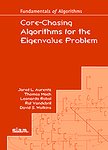
Eigenvalue computations are ubiquitous in science and engineering. John Francis's implicitly shifted QR algorithm has been the method of choice for small to medium sized eigenvalue problems since its invention in 1959. This book presents a new view of this classical algorithm. While Francis's original procedure chases bulges, the new version chases core transformations, which allows the development of fast algorithms for eigenvalue problems with a variety of special structures. This also leads to a fast and backward stable algorithm for computing the roots of a polynomial by solving the companion matrix eigenvalue problem. The authors received a SIAM Outstanding Paper prize for this work.
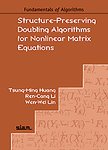
Nonlinear matrix equations arise frequently in applied science and engineering. This is the first book to provide a unified treatment of structure-preserving doubling algorithms, which have been recently studied and proven effective for notoriously challenging problems, such as fluid queue theory and vibration analysis for high-speed trains. The authors present recent developments and results for the theory of doubling algorithms for nonlinear matrix equations associated with regular matrix pencils, and highlight the use of these algorithms in achieving robust solutions for notoriously challenging problems that other methods cannot.
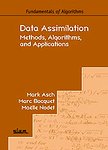
Data assimilation is an approach that combines observations and model output, with the objective of improving the latter. This book places data assimilation into the broader context of inverse problems and the theory, methods, and algorithms that are used for their solution. It provides a framework for, and insight into, the inverse problem nature of data assimilation, emphasizing “why” and not just “how.” Methods and diagnostics are emphasized, enabling readers to readily apply them to their own field of study.
Readers will find
a comprehensive guide that is accessible to nonexperts;
numerous examples and diverse applications from a broad range of domains, including geophysics and geophysical flows, environmental acoustics, medical imaging, mechanical and biomedical engineering, economics and finance, and traffic control and urban planning; and
the latest methods for advanced data assimilation, combining variational and statistical approaches.
电话和邮箱必须正确填写,我们会与您联系确认。
版权所有:内蒙古大学图书馆 技术提供:维普资讯• 智图
内蒙古自治区呼和浩特市赛罕区大学西街235号 邮编: 010021

暂无评论